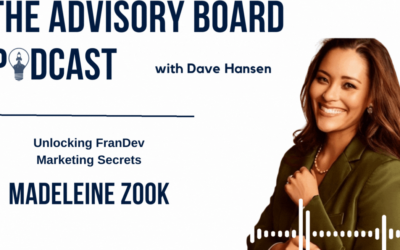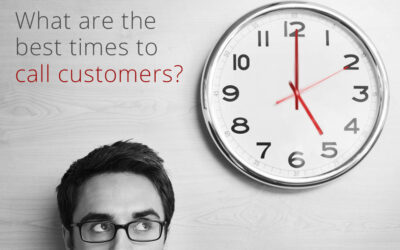Lead Conversion Paradox (For Marketing Agencies)

I had a meeting recently with the founder of a highly respected digital marketing agency, and his comments about lead conversion caught me a little off guard.
This firm specializes in SEO, PPC, and some managed services, and they’re good. They focus a lot of attention on educating their clients, so they can truly partner with them in their lead gen/marketing processes. Their staff know their craft. They only hire the brightest grads to work with them, and they are successful.
The Lead Conversion Paradox
What caught me off guard about our discussion was the frustration he shared with me about what I’ve come to call the Lead Conversion Paradox for digital marketing agencies.
This firm and thousands like them work tirelessly to stay abreast of Google SEO algorithm changes, on-page SEO best practices, PPC conversion tactics, social media, multimedia content, and other lead gen strategies to help their clients grow sales. After investing hours of time into these efforts for their clients, they sit back, watch in-bound lead volumes climb, and make small adjustments to fine tune their outcomes.
You think this would make them and their customers happy. You’d be wrong.
The challenge they and all digital marketing agencies face is that as they increase their clients’ lead flow, their clients are often not equipped to keep pace. As a result, lead conversion rates start to drop, the client sales team gets buried, and all of a sudden, the leads receive the kiss of death from sales. Sales declares they’re getting “bad leads”.
Granted, some campaigns need to be refined to make sure they are using the right keywords and that they’re attracting the right prospects. That’s normal.
But after managing sales teams for more than a decade, I can tell you that more often than not the “bad lead” challenge means a sales team is struggling to keep up with the volumes. When this happens, they start to get a little sloppy with their follow-up. They may make one, maybe two calls to a new lead. If they don’t get a response, they abandon the lead and get back to managing their existing clients and deals.
Often, when their marketing manager follows up about their declining lead conversion numbers, conflict ensues, and sales is quick to note that their leads were low quality and unresponsive.
And this is the root cause of the paradox. Sales really doesn’t know if they got good leads or not, and their lead conversion numbers tell the tale of poor quality leads.
Debunking the “Bad Leads” Myth
Yet, if you were to analyze their follow-up with these leads you would typically find two things to debunk their declaration of the leads being “bad”.
Lead Response Time
The faster a sales rep engages a new lead, the higher the likelihood of lead conversion and the opportunity closing. Leading research shows that this engagement needs to take place in the first 5 minutes of a lead filling out a lead form. More often than not, lead forms are set up to email a sales distribution list, or they go through a (usually manual) process to route the lead to the correct rep, so it can be called by the right product or territory team.
The reality is that most of these processes alone take more than 5 minutes, and reps receive notifications via email – which is the worst way to give urgent notifications.
One to two hours go by, the rep finishes lunch, a product demo, or finally gets back into his or her inbox and immediately calls the lead. Only, the lead moved on 110 minutes ago, has filled out three more lead forms on competitors’ websites, has had two calls, a demo, and is already moving down the road with a more responsive company.
Bad lead? Not as likely as bad lead response time. If only they had a sales automation tool to help.
Lead Nurturing
As more companies adopt gated content marketing strategies to generate leads, it creates a “lead” higher up in the sales funnel that is further away from making a decision. I’ve seen studies that claim as high as 96% of leads aren’t ready to make a purchase decision yet. And if you include trade show leads in that mix, it could be pretty close.
No wonder lead conversion rates for some companies are declining.
Are these “bad leads”? No. They just need a little more nurturing than they used to.
This is again where many sales processes fall flat on their faces without proper lead nurturing automation. And why is that?
Good sales reps are looking for leads that are going to convert and advance toward a close. They don’t want to “waste their time” on unqualified or underdeveloped leads. Usually, this attitude is driven by stark pragmatism not necessarily the infamous egos everyone loves to label sales reps with. They have 50-60 hours to work each week, and an hour spent on unproductive sales work limits their earnings and overall performance.
This is where building out sales engagement automation can have a significant impact on lead qualification, lead conversion, and sales growth without burning out top sales talent or hiring more staff to manage minutia.
Especially with leads needing around 9 touches to convert to a qualified lead or opportunity, it’s not a shocker that even top producers lose interest in some leads before they fully ripen.
How Can You Help Your Clients Boost Their Lead Conversion?
Back to the paradox…
These are still not your sales teams, so you often can’t manage their processes. Your team just hands them leads, and then takes some abuse from your clients for the “quality issues” with their leads.
While I can’t say we can fix all such issues, I recently saw how helping agency staff understand the impact of sales automation on their client lead conversion rates made a difference.
I provided some training to a digital marketing agency team a month or two ago, and one of their account managers stopped me at a networking event last week and told me this (paraphrasing).
“I tell every one of my clients about sales automation and ClientTether now, because I know we’ll eventually have a discussion about declining lead conversions and “bad leads”. That’s when they’ll remember that I educated them about this trend and the likely causes. Rather than looking like we’re providing them bad leads, they’ll look at me as a strategic partner that has a solution to their problem.”
That account manager is going to be a rock star. Not only because he’s promoting real sales automation (wink), but because he also understands that his role is to provide strategic guidance and not just leads to his clients.
If you find yourself or your team stuck in the Lead Conversion Paradox, give us a call at 385-217-7798. We’ll have a member of our team evaluate how we may be able to help you escape it’s evil clutches.
Or check out some of the best research on lead nurturing and lead conversion here. This can help you educate your clients and teams about how to increase lead conversion rates and restore balance to the marketing/sales teams.
Related articles
Embracing the Future of FranDev: Insights from Madeleine Zook
In the business of Franchise Development and marketing, success hinges on strategy, precision, and a profound grasp of the digital landscape. It's a field where these elements can be the difference between growth and stagnation. That's why Dave Hansen's latest...
The Top Franchise Events You Should Attend in 2024
Whether you are a franchisor looking for new best practices, technology, and peer-to-peer networking, a franchise owner looking for new opportunities, or a franchise supplier looking for new prospective clients, franchise industry events are an invaluable resource to...
Unlocking Success with ClientTether
The Digital Touch Franchise businesses face unique challenges when it comes to managing leads and customer relationships. Because modern buyers increasingly prefer to engage in digital channels, effective digital communication is key - and the bottleneck to creating...
What Are the Best Times to Call Customers? – 4 Rules
Professor James Oldroyd of MIT helped lead a survey and study with Inside Sales. The purpose of these studies was to unearth statistical data about the correlation between timing of calling to web leads to the success of contacting and converting these leads. The...
Maximizing Lead Response Time
In today's fast-paced business landscape, responding to leads promptly is essential for franchise owners seeking to convert potential customers into loyal patrons. However, achieving optimal lead response time can be challenging due to various factors. Fortunately,...
Wanna Look Like a Rockstar? [The Maids Success Story]
Wanna Look Like a Rockstar? [The Maids Success Story]Every franchisor aims to give the best products and services to their franchisees, especially in their marketing and sales. Ideally, franchise systems seek to improve franchisee business, allow them to work a little...






![Wanna Look Like a Rockstar? [The Maids Success Story]](https://clienttether.com/wp-content/uploads/2024/01/62ffafc08e710758118b8171_adobestock_32265159-1080x675-1-400x250.jpg)